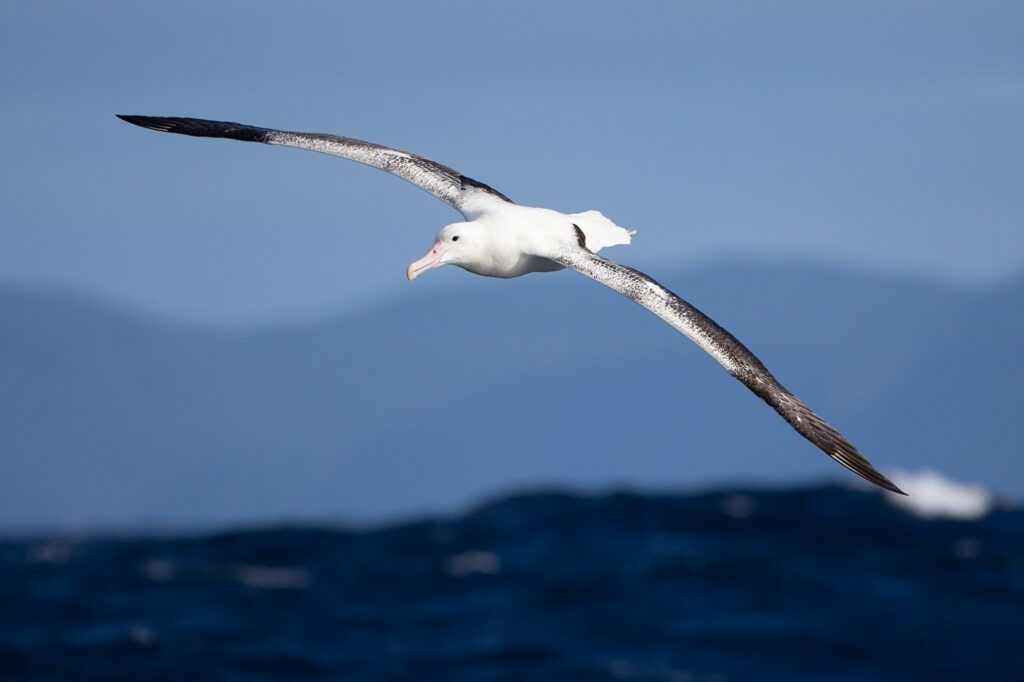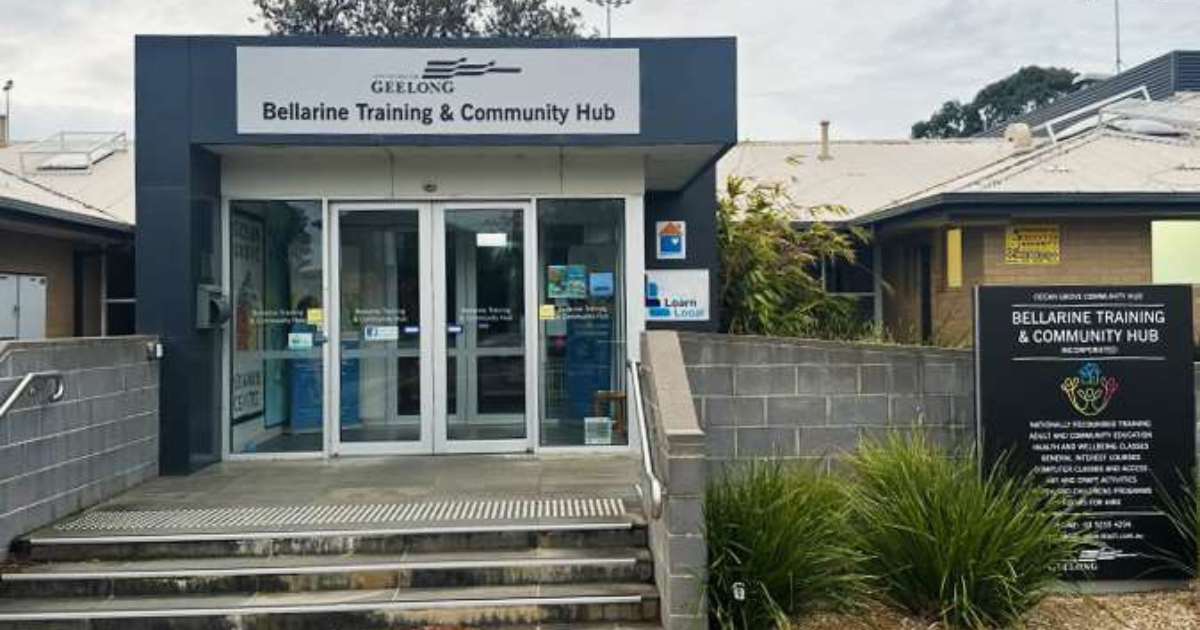Committee for Lorne: Albatross
Albatross
In early February, the regular walkers of the North Lorne beach would have been saddened to see the crumpled remains of a Great Southern Albatross lying broken and forlorn at the high tide mark just near the sitting rock—my rock of contemplation—150m towards Stony from the Pines Carpark.
On sight of it, I threw some imaginary salt over my left shoulder and sought some driftwood to touch—two gestures synonymous with ancient Celtic superstition—then did what I so often do when at this spot … I sat and contemplated.
Did some ill wind befall this beautiful creature? Did it lose its way? Was it—heaven forbid—shot by an ancient mariner? Or, as is more likely, it grew old and weary of flight and settled onto a restless ocean to die.
While the Great Southern albatross [Diomedea epomophoraare] … also known as the Southern Royal albatross or, in Maori, the Toroa … is most at home soaring and gliding in lonely solitude across the cold, forbidding waters of the Southern Ocean, some may occasionally drift the air currents north to grace—the only suitable word—the southern shores of our continent. However, I sense this may only happen if food is scarce or if they are lost or ill.

Wikipedia [how I pray that ‘AI’ never corrupts it] describes this magnificent bird [https://tinyurl.com/3sh696nh] as one of the largest of the albatross species. Closely related to [but taxonomically separate from] its great northern cousin, its wing span can exceed 3 meters [in the old language, 10 feet]. Indeed, it is only just pipped at the wingspan post [a mere foot] by the wandering [or snowy] albatross whose wings stretch wider than any other bird on the planet. It significantly out-spans the wedge-tail eagles we see riding the thermals over the George River or the pasture lands near Bellbrae.
The great southern will often live past 40 years—a sad and sobering thought when pondering the crumpled pile of feathers and bone at the North Lorne high tide mark.
Breeding on lonely subantarctic islands—in particular, rat-free Campbell Island to the south of New Zealand [NB: Macquarie Island is a favourite of the wandering albatross]—they are known to glide over a 1250km radius in search of squid, fish, crustaceans and salps and will enter the shallower waters closer to the continental shelf than the wanderers.
Distinctive white upper wings, edged and tipped in black, distinguish the great southern from the wandering [or snowy] albatross—which, true to its name, is snowy white—and the black-winged albatrosses found in the northern hemisphere.
But beyond being a most magnificent bird, the albatross has played a central role in the myths and legends of the deep. Ever since man took to the oceans, the albatross has followed close behind, building a legend of mystical powers. Their habit of ‘following’—as with many lesser gulls that swoop and caw behind a fishing boat or an inter-island ferry in the Hebrides—is likely no more than in expectation of food, but in the superstitious days of sailors’ past, fuelled a long list of magical powers.
As a child, two of my favourite bedtime poems were ‘The Rime of the Ancient Mariner’ by Samuel Taylor Coleridge—you may not believe it, but I have a fridge magnet bearing a sketch likeness of Coleridge on my freezer door—and Macauley’s ‘Lays of Ancient Rome’ and the story of Horatio defending the bridge to Rome against Lars Porcena and the Etruscans. They were both boys’ own adventures in rollicking rhyme, and I couldn’t get enough of them. They are long, but if you haven’t read them to your kids, you should! Dad learned, I think, to précis the verses!
In ‘The Ancient Mariner’, although things started well, a fierce storm blows the mariner’s ship off course and far into the Antarctic. An albatross—perhaps a Great Southern— soon appears, befriends the mariner’s ship, and leads it out of the ice floe. But, although the albatross had been adopted and fed by the crew as a friend and saviour, the mariner picks up his crossbow and shoots the albatross when the wind begins to die.
‘… with my crossbow, I shot the albatross.’
Then follows a slew of mixed emotions from the crew: first anger at the deed, then gratitude when the fog and mist lifted:
‘… t’was right, said they, such birds to slay that brought the fog and mist’
Then comes despair when the doldrums set in:
‘… day after day, day after day, we stuck nor breath nor motion, as idle as a painted ship upon a painted ocean’
Eventually, the crew force the mariner to wear the bird’s remains around his neck in penance … the origin of the saying ‘like an albatross about his neck’.

It is a ripper tale that tells both sides of the albatross myth … a bird of good luck [a guide for lost sailors at sea]: a bird of despair [an omen of regret for past sins and mistakes] … while the moral points to the dangers of acting without thought to the consequences.
Thus, as I perched on my sitting rock, I turned to Poetry.com for a full re-read of Coleridge’s epic, Blighty tethered to my ankle to prevent his escape while only a few metres along the beach, the sorry carcass lay mouldering in the sun.
It made me wonder what ships our now-deceased great southern albatross might have followed when at sea. What store might their sailors have placed in the solitary bird that followed in their wake? Do sailors still view these magnificent creatures with a mixture of awe, reverence, and trepidation—as did the sailors of the past?
And … may you rest in peace, good albatross.
John Agar
Feature Writer
A word from the chairman
Hello
Last weekend saw the end of the month-long Lorne Sculpture Biennale. Firstly, I wish to congratulate all associated with the staging and running of the event. We were presented with a series of sixteen site-responsive artworks from established and emerging artists responding to our experience of place. The curatorial theme was STRATA, derived from the iconic geology of Gadubanud Country.
As well as the sixteen artworks, the Biennale included a small sculpture exhibition, held at Lorne Community Connect. I spent some time volunteering at the small sculpture exhibition and I was reminded from the comments of the visitors how much they valued the experience of viewing the sculptures, plus the fact that many are regular visitors to Lorne for the Biennale. As residents we are the beneficiary of a cultural experience and as business operators, a boost to our trading.
At a thank you celebration for the volunteers, Andrew Stobart (committee president) said that from the responses to an online survey, eighty percent of the respondents stated that they had a positive experience and that they will return to a future Biennale. This is an excellent outcome and all connected with the event must be very pleased.
The display of public artworks not only enriches our daily life, but it also stimulates discussion over the nature of the works and from the organised events and conversations. Both are desirable outcomes and they both occur due to the hard work and commitment of a small band of committee members and volunteers. I must also thank the patrons and sponsors, whose support is essential to the staging of the event. Finally, congratulations to curator Simon Lawrie after completing what I am sure was an exhausting, but none the less rewarding two years.
The committee has just announced the winners of the Peoples Award, voted by the public.
Shared between Richard Collopy: Parrawa wuurn – Spear hut of steel and wood located on the foreshore and Chaohui Xie: Deterritorialisation and reterritoralisation ocated on Erskine Paddock.
*****
Last week the planned burning program, conducted by Forest Fire Management Victoria (FFMV) started at the Green Break Track and the Treatment Plant with the aim to complete the burn prior to the school holidays. The burn also caused some necessary delays for residents and tourists.
Looking beyond this activity FFMV has identified larger options (Sharps Track and Henderson Track Burns) to the west of town that will impact the broader walking track network near the She Oak Picnic Area. These are big burns that will see both additional crews and aircraft into the area which will naturally generate community interest.
At the time of writing this article FFMV, will firm up options based on updated weather forecasts. The long-range forecasts look both mild and reasonably stable. Their hope is to get the bulk of the program completed prior to school holidays to limit impact on the community.
Due to the build-up of forest fuel over the past few years, burns are required to reduce the bushfire risk, both in terms of size, severity and to aid bushfire suppression efforts. We live in a beautiful part of the world, but in an area that is highly prone to forest fires. In conjunction with planned burns is the use of strategic fuel breaks across the region. Breaks are non-burn fuel treatments, such as slashing and mowing treatments.
Having a long-term connection to Lorne and experiencing many bushfires over the past years, I have a great deal of appreciation for those who are committed to keeping us safe from bushfires and who put their own safety as a secondary consideration to that of the community, particularly the volunteers of the CFA, who also assist in the fuel reduction program.
When it comes to planned burning in your area, there are various ways in which you can get further information:
REGISTER: for the Planned Burn Notification system at plannedburns.ffm.vic.gov.au
Forest Fire Management Victoria encourage you to sign up for the Planned Burn Notification System which allows you to set up automated notifications about upcoming planned burns on public land. This will include burns beyond the immediate Lorne area, which may impact travel arrangements. There is no charge to register or to receive messages.
VISIT: https://www.ffm.vic.gov.au/bushfire-fuel-and-risk-management/joint-fuel-management-program
CALL: the VicEmergency Hotline on 1800 226 226 also,
FOLLOW: DEECA Barwon South West on Facebook
Gary Allen
Standing in for Chairman John Higgins
Lorne Ward Events Calendar
April
17 – Photographic Exhibition Opening night, @ Lorne Community Connect Thursday 17 April 6 pm – 7.30 pm.
18-28 – 2025 Photographic Exhibition Routine and Ritual. Info: lornecommunityconnect.com.au
19 – Lorne Market, 9-3pm www.lornemarkets.com/
20 – Lorne Aquatic & Angling Club – Major Fishing Competition No 3, Weigh cut off 12.30pm. Free roast lunch for competitors, $10 non-fishing members.
May
4 – LAAC Winter Comp No 1. lines down after 6am, weigh in at the Lorne Aquatic and Angling Club at 12:30 followed by BBQ lunch.
17-18 Great Ocean Road Running Festival, Running, music, wellness, adventure.
June
8 Lorne Aquatic & Angling Club – Major Fishing Competition No 4, Weigh cut off 12.30pm. Free roast lunch for competitors, $10 non-fishing members.


















